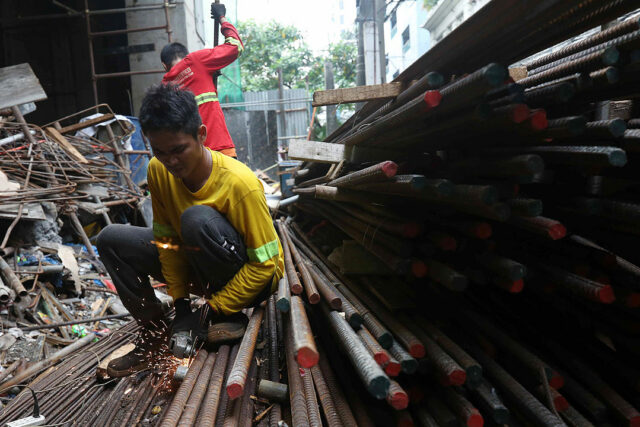A MODERN-DAY political inquisition is unfolding in “digital town squares” across the United States. The slain far-right activist Charlie Kirk has become a focal point for a coordinated campaign of silencing critics that chillingly echoes one of the darkest chapters in American history.
Individuals who have publicly criticized Kirk or made perceived insensitive comments regarding his death are being threatened, fired, or doxed.
Teachers and professors have been fired or disciplined, one for posting that Kirk was racist, misogynistic, and a neo-Nazi, another for calling Kirk a “hate-spreading Nazi.”
Journalists have also lost their jobs after making comments about Kirk’s assassination, as has the late-night television host Jimmy Kimmel.
A website called “Expose Charlie’s Murderers” had been posting the names, locations, and employers of people saying critical things about Kirk before it was reportedly taken down. Vice-President JD Vance has pushed for this public response, urging supporters to “call them out … hell, call their employer.”
This is far-right “cancel culture,” the likes of which the US hasn’t seen since the McCarthy era in the 1950s.
THE BIRTH OF MCCARTHYISM
The McCarthy era may well have faded in our collective memory, but it’s important to understand how it unfolded and the impact it had on America. As the philosopher George Santayana once said, “Those who cannot remember the past are condemned to repeat it.”
Since the 1950s, “McCarthyism” has become shorthand for the practice of making unsubstantiated accusations of disloyalty against political opponents, often through fear-mongering and public humiliation.
The term gets its name from Senator Joseph McCarthy, a Republican who was the leading architect of a ruthless witch hunt in the US to root out alleged Communists and subversives across American institutions.
The campaign included both public and private persecutions from the late 1940s to early 1950s, involving hearings before the House Un-American Activities Committee and the Senate’s Permanent Subcommittee on Investigations.
Millions of federal employees had to fill out loyalty investigation forms during this time, while hundreds of employees were either fired or not hired. Hundreds of Hollywood figures were also blacklisted.
The campaign also involved the parallel targeting of the LGBTQI+ community working in government — known as the Lavender Scare.
And similar to doxing today, witnesses in government hearings were asked to provide the names of communist sympathizers, and investigators gave lists of prospective witnesses to the media. Major corporations told employees who invoked the Fifth Amendment and refused to testify that they would be fired.
The greatest toll of McCarthyism was perhaps on public discourse. A deep chill settled over US politics, with people afraid to voice any opinion that could be construed as dissenting.
When the congressional records were finally unsealed in the early 2000s, the Permanent Subcommittee on Investigations said the hearings “are a part of our national past that we can neither afford to forget nor permit to reoccur.”
ANOTHER WITCH HUNT UNDER TRUMP
Today, however, a similar campaign is being waged by the Trump administration and others on the right, who are stoking fears of “the enemy within.”
This new campaign to blacklist government critics is following a similar pattern to the McCarthy era, but is spreading much more quickly, thanks to social media, and is arguably targeting far more regular Americans.
Even before Kirk’s killing, there were worrying signs of a McCarthyist revival in the early days of the second Trump administration.
After Trump ordered the dismantling of public Diversity, Equity, and Inclusion (DEI) programs, civil institutions, universities, corporations, and law firms were pressured to do the same. Some were threatened with investigation or freezing of federal funds.
In Texas, a teacher was accused of guiding Immigration and Customs Enforcement (ICE) squads to suspected non-citizens at a high school. A group called the Canary Mission identified pro-Palestinian green-card holders for deportation. And just this week, the University of California at Berkeley admitted to handing over the names of staff accused of antisemitism.
Supporters of the push to expose those criticizing Kirk have framed their actions as protecting the country from “un-American,” woke ideologies. This narrative only deepens polarization by simplifying everything into a Manichean world view: the “good people” versus the corrupt “leftist elite.”
The fact the political assassination of Democratic lawmaker Melissa Hortman did not garner the same reaction from the right reveals a gross double standard at play.
Another double standard: attempts to silence anyone criticizing Kirk’s divisive ideology, while being permissive of his more odious claims. For example, he once called George Floyd, a Black man killed by police, a “scumbag.”
In the current climate, empathy is not a “made-up, new age term,” as Kirk once said, but appears to be highly selective.
This brings an increased danger, too. When neighbors become enemies and dialogue is shut down, the possibilities for conflict and violence are exacerbated.
Many are openly discussing the parallels with the rise of fascism in Germany, and even the possibility of another civil war.
A SENSE OF DECENCY?
The parallels between McCarthyism and Trumpism are stark and unsettling. In both eras, dissent has been conflated with disloyalty.
How far could this go? Like the McCarthy era, it partly depends on the public reaction to Trump’s tactics.
McCarthy’s influence began to wane when he charged the army with being soft on communism in 1954. The hearings, broadcast to the nation, did not go well. At one point, the army’s lawyer delivered a line that would become infamous: “Until this moment, Senator, I think I never really gauged your cruelty or your recklessness […] Have you no sense of decency?”
Without concerted, collective societal pushback against this new McCarthyism and a return to democratic norms, we risk a further coarsening of public life.
The lifeblood of democracy is dialogue; its safeguard is dissent. To abandon these tenets is to pave the road towards authoritarianism.
THE CONVERSATION VIA REUTERS CONNECT
Shannon Brincat is a senior lecturer in Politics and International Relations, University of the Sunshine Coast. Frank Mols is a senior lecturer in Political Science, The University of Queensland. He has received ARC funding. Gail Crimmins is an associate professor, University of the Sunshine Coast.















